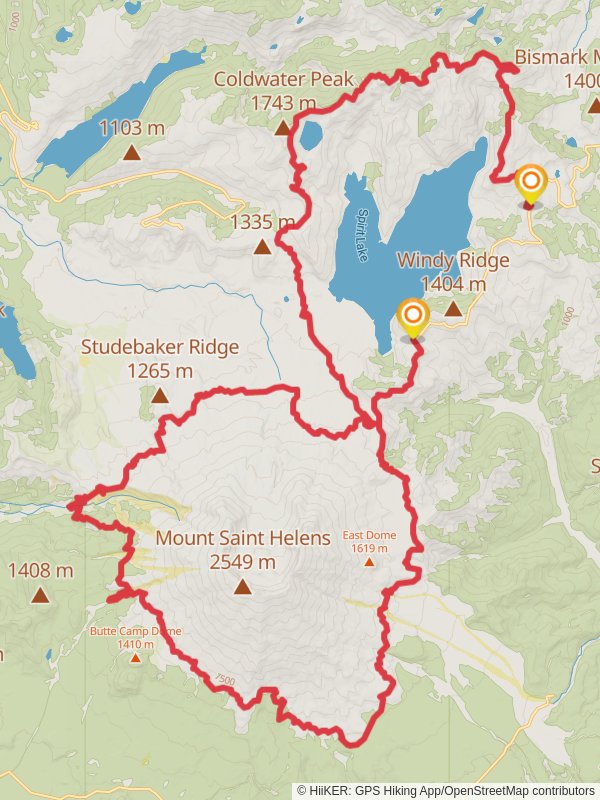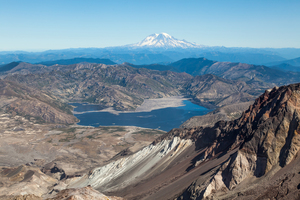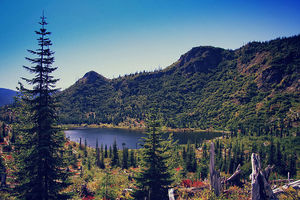
Mount St Helens Area Loops
Gifford Pinchot National Forest · Skamania County, Washington
73.9 km
~3 day
2542 m
“Explore the regenerating wonders of Mount St. Helens on a challenging and scenic 46-mile hiking adventure.”
The Mount St Helens Area Loops encompass a network of trails that offer an immersive experience into the heart of the Pacific Northwest's volcanic landscape. With a total distance of approximately 74 kilometers (46 miles) and an elevation gain of around 2500 meters (8200 feet), hikers can expect a challenging journey that traverses through the regenerating ecosystem surrounding the infamous Mount St. Helens.
Getting to the Trailhead
The trailhead is situated near Skamania County, Washington. For those driving, the starting point can be accessed by taking State Route 504, also known as the Spirit Lake Highway, which leads to the Mount St. Helens National Volcanic Monument. Public transportation options are limited in this remote area, so a personal vehicle or a car rental is recommended to reach the trailhead.
Navigating the Trail
Hikers should prepare for a point-to-point trek that will require either arranging a pick-up at the end of the trail or a two-car shuttle system. It's essential to have a reliable navigation tool, such as HiiKER, to keep track of your location and the route, as the trail can be complex with its various loops and junctions.
Landmarks and Natural Features
As you embark on the trail, you'll be greeted by the stark contrast between the lush old-growth forests and the blast zone left by the 1980 eruption. The first section of the trail will take you through dense woodland, gradually ascending towards more open areas with panoramic views of the surrounding landscape.
One of the most significant landmarks you'll encounter is the Johnston Ridge Observatory, located approximately 8 kilometers (5 miles) from the trailhead. This observatory offers educational exhibits about the eruption and its aftermath, as well as breathtaking views of Mount St. Helens' crater.
Further along the trail, hikers will come across the Plains of Abraham, a vast, pumice-covered plain that showcases the raw power of volcanic activity. This area is roughly 16 kilometers (10 miles) into the hike and provides a unique opportunity to observe the ongoing natural recovery process.
Wildlife and Flora
The Mount St Helens Area Loops are home to a variety of wildlife, including elk, black bears, and mountain goats. Birdwatchers may also spot species such as the northern pygmy-owl and the American dipper. The flora is diverse, with wildflowers like lupine and Indian paintbrush dotting the landscape, especially in the late spring and summer months.
Historical Significance
Mount St. Helens is a site of profound geological interest due to the catastrophic eruption on May 18, 1980. The event drastically altered the topography and ecology of the region, making it a living laboratory for scientists and a point of interest for hikers. The trail offers a firsthand look at the destructive power of nature and the resilience of life as the area continues to recover.
Preparation and Safety
Given the trail's difficulty rating and remote nature, hikers should be well-prepared with adequate supplies, including water, food, and layers for changing weather conditions. It's also wise to inform someone of your hiking plans and expected return time. Due to the elevation gain and the length of the trail, physical fitness and acclimatization to altitude are important considerations.
Remember, the Mount St Helens Area Loops are not just a physical challenge but also an opportunity to witness the awe-inspiring transformation of a landscape shaped by volcanic forces. With careful planning and respect for the natural environment, hikers can enjoy a memorable experience in this unique corner of the world.
Reviews
User comments, reviews and discussions about the Mount St Helens Area Loops, Washington.
4.0
average rating out of 5
12 rating(s)




